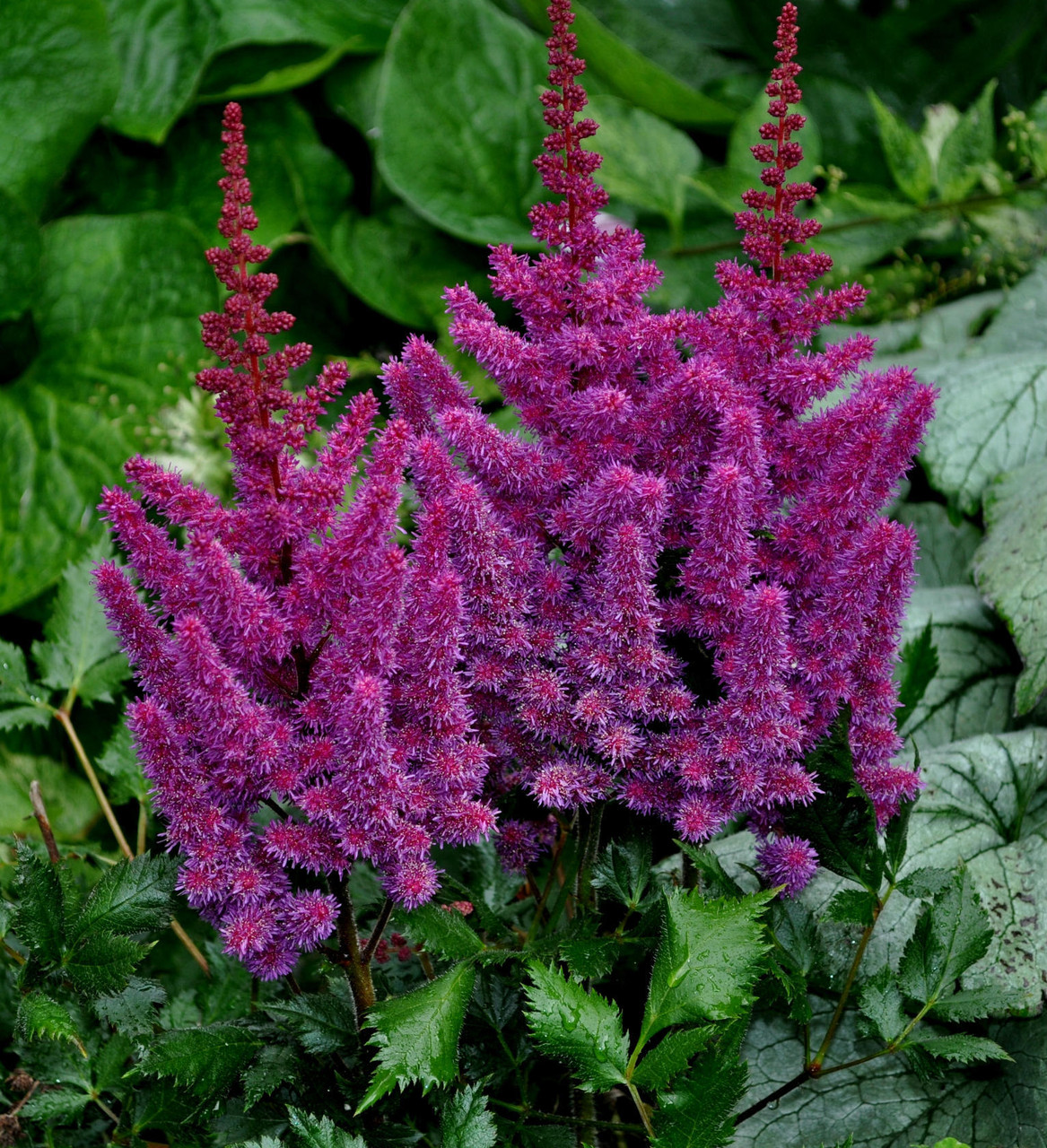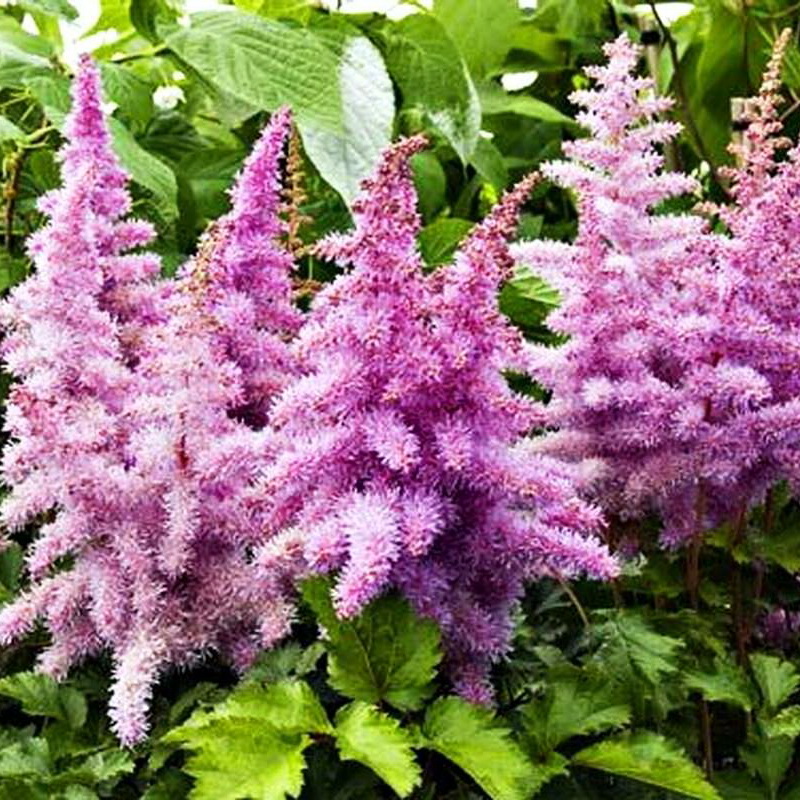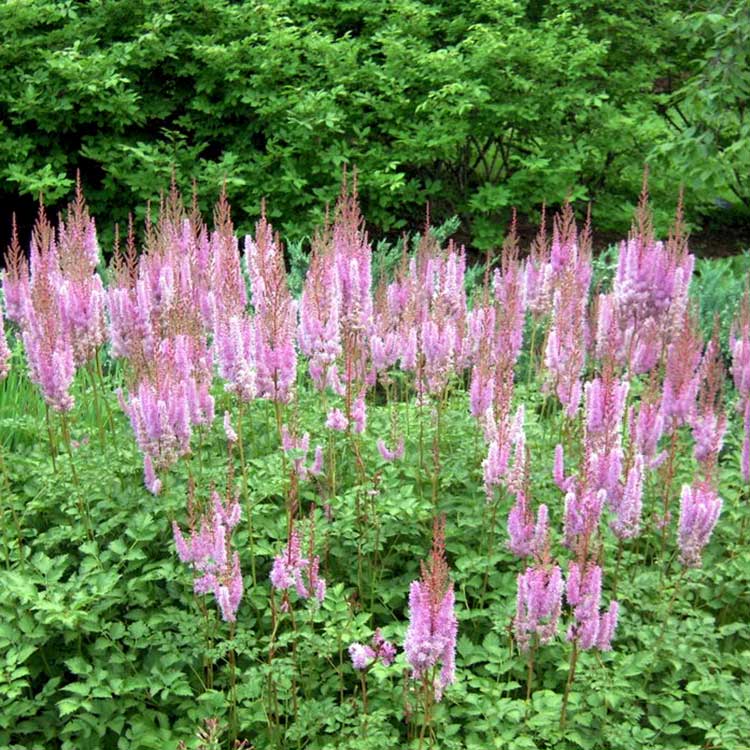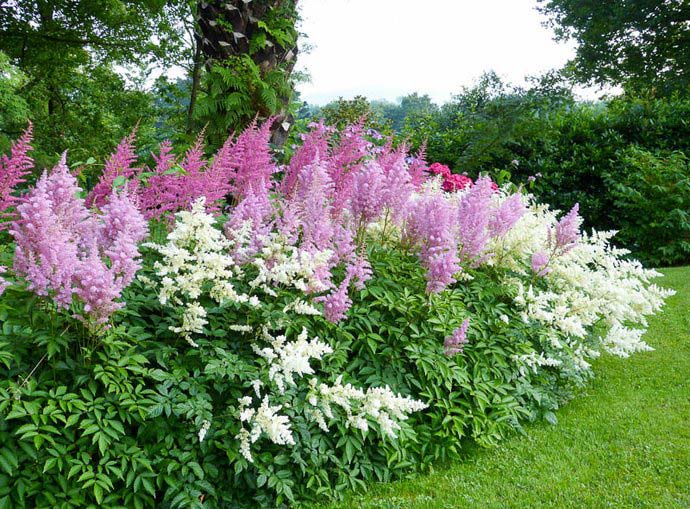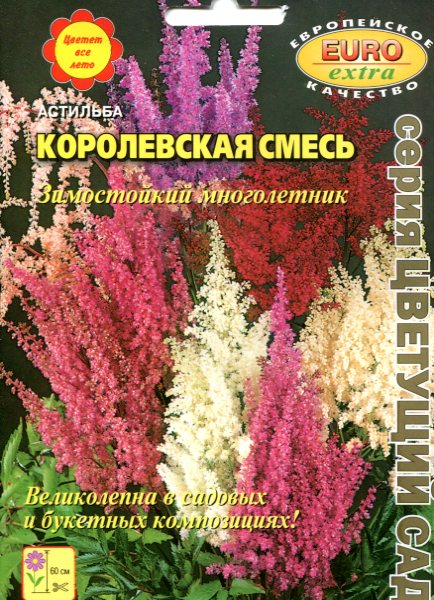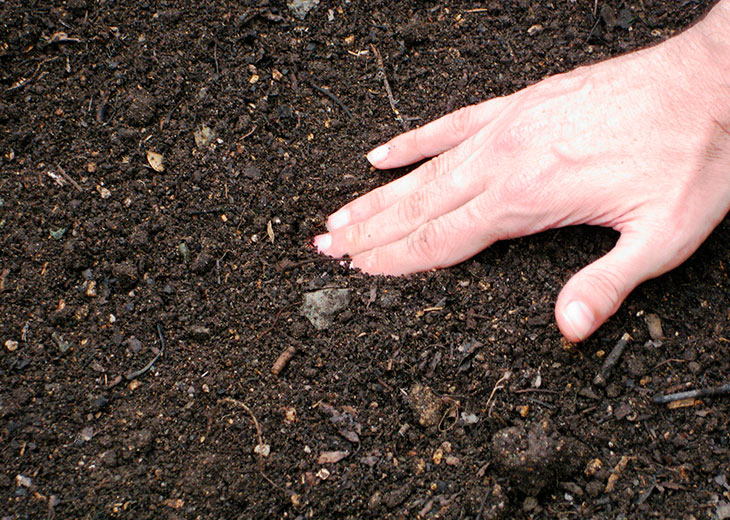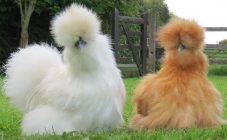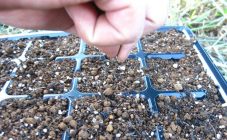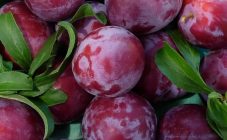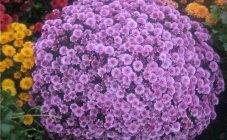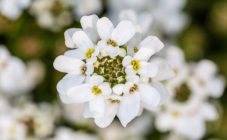Content:
Astilba is one of the most spectacular flowers. This is a recognized "favorite" of Russian summer residents. Most often, astilbe is used to decorate gardens decorated in an oriental (Chinese or Japanese) style. It can also be found in parks and squares. In landscape design, astilba is considered one of the most spectacular plants. Most often, two types of astilba are grown in Russia - Chinese and Japanese. A description of these varieties can be found in any beginner's guide.
A quick reference about culture
Astilba chinensis is a perennial herb that is often used in landscaping for its spectacular-looking, brightly colored paniculate inflorescences. The plant belongs to the genus Astilba and belongs to the saxifrage family. Astilbe grows wild in the following regions:
- China;
- Japan;
- North and South Korea;
- Far East of the Russian Federation (Primorsky Territory).
In Russia, this flower appeared relatively recently, at the end of the 20th century. First, astilbe came to Europe, and from Europe (specifically from Holland) to Russia. Domestic breeders have bred several varieties that are zoned for the Russian Central Lane and more northern regions.
The flower is an excellent honey plant and is very popular with the owners of private beekeeping farms. Also, this plant is used as an ornamental plant. In this regard, the Chinese astilba Vision in ed. The roots, stems and inflorescences of astilba contain natural antioxidants and bioflavonoids, and are also rich in vitamins.
In China, some varieties of this plant have been used since ancient times in folk medicine, as well as in cooking: as a seasoning for fish and meat dishes. In Russia, medicinal raw materials from astilba are also sometimes used by doctors practicing alternative medicine.
The main characteristics of the plant
There are many varieties of the plant. The Chinese variety differs from others in its compact bush shape and a longer flowering period. Below are the main characteristics of the plant:
- Straight, strong stem with a smooth surface.
- The height of an adult plant is up to 70 cm.
- The shape of the leaves is wide, with sharp ends.
- The color of the leaves is dark green, intense uniform color, the petioles are slightly reddish.
- The bushes do not differ in spreading.
- The shape of the inflorescences is paniculate.
- The color of the inflorescences is pink, lilac, red, depending on the variety. Sometimes there is also a dark purple, almost black color. Inflorescences are collected in high lush panicles.
The plant begins to bloom in the second decade of July, ends in the second decade of August. The flowering period is approximately 40 days. Pollination requires bees. The root system is fibrous, dense roots grow quickly, so the flower needs a lot of space in the garden. Astilba loves space and does not tolerate crowded planting.
Characteristics of species and varieties of crops
An inexperienced summer resident can easily get lost in the abundance of varieties of Chinese astilba. The most popular among domestic summer residents are the following varieties of culture:
- Pumila is a low-growing variety, purple inflorescences with a pinkish tinge, blooms late, is considered a creeping plant.Astilba Pumila is resistant to temperature extremes and frost. Also, astilba Pumila grows well on soils with a neutral and slightly acidic reaction.
- Vision in red is a tall plant, grows rapidly, purple inflorescences, shoots are slightly lowered down. Sometimes this variety is mistakenly called astilba vision. Astilba Vision in red is resistant to the main diseases and pests of this plant.
- Purpurkerce is a tall plant, reaches more than 1 m in height, openwork leaves, purple flowers with a purple tint. The Purpurkertse variety is very popular precisely because of the high height of an adult flower. Astilba Purpurkerce tolerates the sun well, but is afraid of drafts.
- Hart and soul (translated from English "heart and soul") - height 80 cm, light green leaves, reddish stems, pinkish flowers with a lilac tint. Astilba Hart & Soul is shade tolerant and drought tolerant.
- Superba is a tall plant, dense foliage, carved leaves with a shiny surface, grows quickly, pale lilac flowers. This variety is very similar to another variety - Astilba Sprite, but there are some differences. Astilba Superba loves space and grows poorly in crowded conditions.
- Maggie Daily - 60 cm tall, late flowering, elongated pale pink inflorescences, blooms throughout August.
- Milk and honey - height 1 m, sprawling bush, dense and delicate foliage, pale pink inflorescences with a pronounced honey aroma. Astilba Milk and honey is one of the best honey varieties. Also, astilba Milk and Hani, due to the unusual color of the inflorescences, is often found in parks and squares.
It is best to purchase planting material in specialized nurseries, where you can also get recommendations on the agricultural technology of growing each specific variety. The most popular among Russian summer residents is astilba Chinese Vision in ed.
Planting and leaving
Astilba care depends on the specific variety. However, there are general guidelines.
The plant loves soil with a lot of loam. It is desirable that the groundwater at the planting site of the flower lie as high as possible. The plant tolerates shade well, but needs protection from open sun and wind.
Pruning is used to form the culture. Also, this event plays a large role in preparing the plant for winter, and therefore is carried out after flowering. But it is worth waiting a little, as seeds can be removed from the dried inflorescences and used as seed. Also in the fall, the division of the bush and the rejuvenation of the culture are carried out.
The easiest and most convenient way to propagate the plant is by dividing the bush. It is carried out before flowering begins. An adult plant is dug out of the ground, the root is cut into pieces so that at least 2 buds remain on each. When growing astilba from seeds, it should be borne in mind that this method is quite laborious, in view of the small size of the seeds. This method is mainly used by professionals for breeding new species.
The list of basic astilba care measures includes:
- top dressing with potash and phosphorus fertilizers of industrial production;
- root system mulching;
- regular cutting of dried and deformed inflorescences and shoots;
- shelter for the winter;
- weeding and loosening.
Astilba chinensis is quite sensitive to drought, so watering should be regular. The plant should be in an area that is well protected from the wind. The best time to water is early morning or late evening.
Astilba can be planted with seeds in open ground, but this method is quite troublesome and is rarely used in practice. Seed planting is practiced by those who have set themselves the goal of developing a new plant variety. Most often, flower growers grow seedlings in a pot at home, and then plant them in open ground.This method is considered the most effective, healthy and strong seedlings almost always take root without problems. You can also purchase renewal buds in February and root them for later planting.
There are cases when, under favorable conditions, astilbe grew from seeds by itself. If the faded panicles are not removed, bolls form on them. In the fall, they will open and the seeds will fall to the ground. They overwinter safely under the snow and may germinate.
Major diseases and pests
Astilba is a culture that is quite resistant to diseases. However, if the plant is initially weakened, it can easily contract a viral or bacterial infection.
Most often, the flower suffers from diseases such as:
- Viral mosaic of leaves - the leaves are deformed, dry, acquire a spotty color.
- Bacterial rot is the most dangerous disease. Large black spots suddenly appear on the leaves and the flower dies rapidly.
- Root rot is often the result of high humidity and excessive soil moisture.
- Phytoplasma lesions. They are dangerous because they are quite difficult to diagnose. They go on without symptoms for a long time, and then the plant suddenly dies.
Astilbe is damaged by insects such as slobbering pennies, aphids and nematodes. You can fight them by manually collecting insects, as well as by destroying the affected bushes and fumigating with tobacco dust.
Chinese astilba is a plant that is unpretentious to care for. With proper cultivation techniques, it will delight the eye for many years with its lush flowers, collected in tall panicles.
